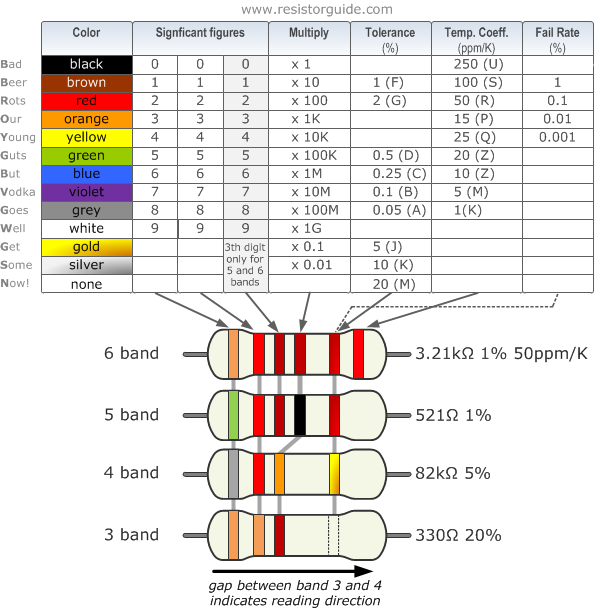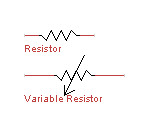Resistors are essentially the kinks in the hose as described above, they provide electrical resistance from one end to the next. Resistors generally do not have a polarity, so it does not matter which way they are pugged in. There are many different types of resistors, but they essentially operate the same.
Resistors are marked with a value that indicates how much resistance it can provide. Some like ceramic disk resistors will have it written on it directly, while barrel type resistors use a color code to indicate the value.

The chart might look a little intimidating, but don’t worry it’s fairly easy to use. To read the resistance, you will need to read from left to right. Although these types of resistors do not indicate which direction they should be read, there is a gap between the bands that places at the most two on one side, that should be on the right where 3 or 4 bands should be on the left. Once you have that, you can start to read the bands. Sometimes it helps to have a pencil handy. The first 2 bands are just digits, so you can write them down based on the color code. If you have a 3 or 4 band resistor, the 3rd band will be a multiplier which multiples the two digits you wrote down. A 4 band resistor will have the last band reserved for tolerance levels, which will say how close to the printed value the resistor should be. The lower the tolerance, the more exact the resistance value should be.
For 5 and 6 band resistors, the first three bands are digits, and the 4th is reserved for the multiplier. The 5th band is reserved for tolerances, just like the 4th band on 4 band resistors. Lastly, 6 band resistors have a Temperature Coefficient value, which lets you know how much the resistance will change during temperature changes. In all likelihood you will not encounter these resistors or need this particular value for our projects.
On a circuit diagram they are represented by these symbols:


